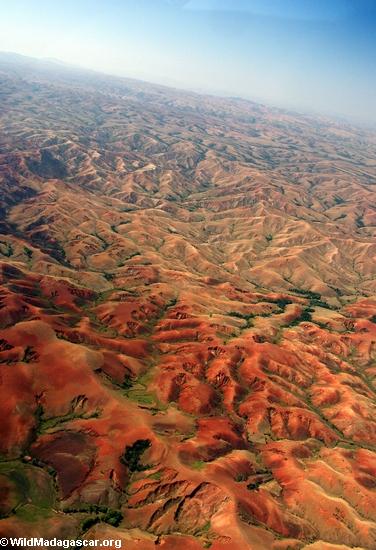A look at why is Madagascar so poor
mongabay.com
May 22, 2005
Madagascar is one of the world’s poorest countries. In the Human Development Index of 2003, an indicator created by the United Nations Development Programme which measures achievements in terms of life expectancy, educational attainment and adjusted real income, Madagascar was ranked #149 out of 175 counties. Most Malagasy live on less than a dollar per day and nearly half of the country’s children under five years of age are malnourished.
Why is Madagascar so poor?
Madagascar is among the world’s poorest countries despite its biological and cultural richness due to:
- Environmental degradation
Madagascar’s environmental degradation is severe. Perhaps 90% of Madagascar’s forests are gone while 25-30% of the country burns every year from agricultural fires. Soil erosion robs the country’s agricultural capacity and further impoverishes rural populations. Conserving what remains of Madagascar’s wildlands and biodiversity is key to the country’s future economic development.
- Kleptocractic rule
Under the kleoptocratic rule of French-backed dictator Didier Ratsiraka — who modeled his economic policies on North Korea — government officials stole millions of dollars in funds ear-marked for aid and development activities.
More generally, corruption is extremely costly to developing economies. Corruption breeds poorly performing economies by discouraging private sector development, scaring off foreign investors, undermining government credibility, and impeding poverty alleviation. The kleptocrats believe that they stand to gain more from taking a large share of a stable or shrinking economy than from a shrinking portion of an increasing economy. Economies based on natural resource extraction, like Madagascar, are particularly prone to kleptocracy.
- Economic colonialism
Despite achieving independence in 1960, Madagascar is still largely run like a colony with an economy closely tied to resource extraction. Lack of investment in sustainable industries has retarded Madagascar’s economic development significantly.
New president Marc Ravalomanana is working to move away from the old system and attract foregin investment that will build sustainable business models (though resource extraction, especially mining, will still play an important part in developing Madagascar’s economy).
- Lack of infrastructure
According to CIA figures, Madagascar has 49,827 km of roads, of which just 5,780 km are paved. These figures are probably optimistic; many of Madagascar’s “paved roads” are in terrible shape, filled with potholes and or wide enough for only a single vehicle. Cyclones and other weather conditions often wipe out roads and bridges making travel even more difficult.
New president Marc Ravalomanana has initiated a major infrastructure improvement program in an effort to boost the Malagasy economy. This plan is likely to bring economic benefits but may have high social costs with increased access affecting traditional Malagasy culture and perhaps spreading AIDS from cities to the countryside. Currently Madagascar has one of the lowest HIV / AIDS rates in Africa.
- Geographic isolation
Madagascar’s geographic isolation increases the cost of trade. This isolation is not all bad — it is a large part of why Madagascar has such incredible biodiversity and unique cultural practices.
- Relatively small population
A small population is not necessarily a bad thing but it does not really help the economy. Because Madagascar’s population is relatively small (and poor), it will continue to be underserved as a market for international firms. With less than 20 million people, foreign corporations lack the incentive to develop, transport, and market many goods in Madagascar.
- Educational system
Madagascar’s children lack an adequate educational system. Being poor makes it difficult for the government to spend much on education and until recently most kids lacked basic educational supplies. Textbooks available to Malagasy children taught them nothing of local fauna (emphasis on European and African animals not lemurs, tenrecs, and chameleons) or much about their own country and unique cultural identity.
New president Marc Ravalomanana has put major emphasis on improving Madagascar’s educational system including providing training for teachers and distributing backpacks and school supplies for children. International organizations are using radio as a tool for educating adults in remote areas about issues such as conservation while others work with local farmers to improve crop yields. The government has begun teaching English in schools.
Other articles on Madagascar
- Seeking the world’s strangest primate on a tropical island paradise off Madagascar
- Madagascar looks toward a brighter economic future with movie, new aid package
- Down a river of blood into a remote canyon in Madagascar: Exploring the Manambolo River
- New media resource on the wildlife of Madagscar
- Madagascar Larger Than Life, New Life for Madagascar’s Tourist Industry?
- The Giant Jumping Rat, another peculiarity from Madagascar
- Collapsing vanilla prices will affect Madagascar
- Falling price of rice calms street violence in Madagascar
- In Madagascar woodworking Zafimaniry remember lost forests















